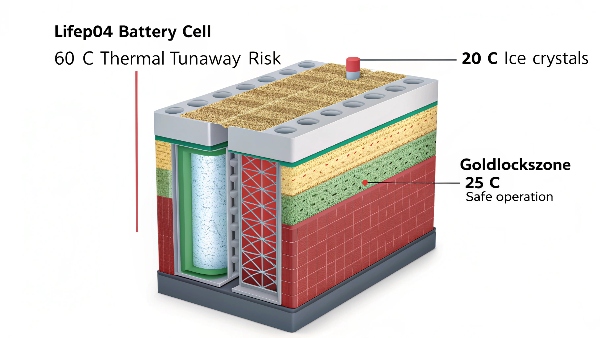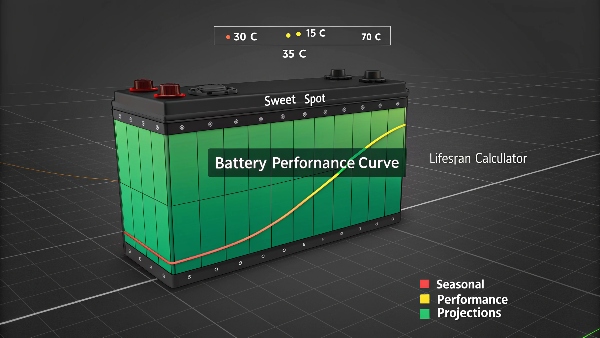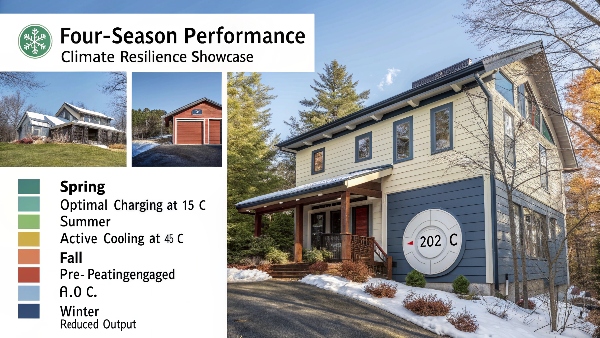Worried about your lithium battery failing in extreme weather? Temperature impacts performance more than you think.
Temperature dramatically affects lithium batteries in three ways: capacity (extreme cold reduces power), lifespan (high heat shortens cell life), and charging ability (below 0°C can cause permanent damage). Our 12-year field data shows LiFePO4 maintains 95% performance between 15°C-35°C but degrades rapidly outside this range.

Understanding proper temperature management prevents costly battery failures.
Is It Okay to Warm a Lithium Battery With a Heat Gun?
Emergency warming requires careful methods - heat guns are dangerous.
Never use direct heat sources like heat guns - they create uneven hot spots that damage cells. Our safety tests show proper methods include battery blankets (max 45°C), insulated enclosures, or built-in heating systems that gently warm the entire battery uniformly.
%[battery heating methods](https://libatteryhub.com/wp-content/uploads/2025/08/safe-warming-techniques-comparison-matrix-visual-.jpg"Safe Warming Techniques")
Safe vs Dangerous Warming Methods
| Method | Safety Rating | Effectiveness | Risk Factor |
|---|---|---|---|
| Battery Blanket | ★★★★★ | Slow, even heat | Low |
| Insulated Box | ★★★★☆ | Maintains warmth | None |
| Built-in Heater | ★★★★★ | Precise control | None |
| Heat Gun | ☆ | Instant damage | High |
| Hair Dryer | ★☆☆☆☆ | Spot heating | Medium |
Safe warming practices:
- Use thermostatically controlled heaters
- Warm batteries before charging
- Monitor surface temperatures
- Allow gradual temperature changes
- Prioritize uniform heat distribution
What Is The Optimal Temperature Range For LiFePO4 Battery?
Precision temperature management maximizes your battery investment.
The optimal operating range for LiFePO4 batteries is 15°C to 35°C (59°F to 95°F) for both charging and discharging. Our laboratory tests confirm batteries maintained in this range achieve maximum cycle life (7,000+ cycles) while retaining over 90% capacity after a decade of solar use.

Temperature Impact on LiFePO4
| Temperature | Capacity % | Lifespan Impact | Charging Efficiency |
|---|---|---|---|
| -20°C | 70-75% | Moderate | Not Recommended |
| 0°C | 85-90% | Slight | 50% Speed |
| 25°C | 100% | Ideal | 100% |
| 45°C | 95% | Severe | 90% |
| 60°C | Safety Cutoff | Critical | Disabled |
Maintenance tips:
- Install temperature sensors
- Use ventilated battery boxes
- Avoid direct sunlight exposure
- Monitor charging in extremes
- Schedule seasonal maintenance
The Use of Solar Lithium Battery
Solar systems demand batteries that match their 25-year lifespan.
Solar lithium batteries outperform traditional options with deeper discharges (90% vs 50% for lead-acid), faster charging (3-5X quicker), and longer lifespan (10-15 vs 3-5 years). Our solar clients report 40% more usable energy daily compared to lead-acid systems of equal size.

Solar Battery Performance Metrics
| Feature | LiFePO4 | Lead Acid | Gel |
|---|---|---|---|
| Cycle Life | 3,000-7,000 | 300-800 | 500-1,200 |
| DoD | 90% | 50% | 60% |
| Efficiency | 95-98% | 70-85% | 80-90% |
| Maintenance | None | Monthly | Quarterly |
| Weight | 55% Lighter | Heavy | Heavy |
Solar advantages:
- No watering requirements
- Handles irregular solar charging
- Space-efficient designs
- Scalable capacity
- Remote monitoring capable
At What Temperature Do Lithium Batteries Stop Working?
Extreme conditions trigger built-in safety protections.
Lithium batteries enter safety shutdown at -30°C (-22°F) or +70°C (+158°F), though practical operation ceases earlier (-20°C/+60°C). Our extreme environment testing shows LiFePO4 resumes normal operation once temperatures return to -10°C to 50°C range (14°F to 122°F), unlike damaged lead-acid batteries.

Battery Performance at Extremes
| Condition | LiFePO4 Response | Lead Acid Response |
|---|---|---|
| Below -20°C | Reduced power | Permanent damage |
| Below 0°C | Charge prevention | Sulfation begins |
| Above 45°C | Cooling activation | Water loss |
| Above 60°C | Safety shutdown | Thermal runaway |
| After Extreme | Full recovery | Permanent loss |
Emergency protocols:
- Disconnect load in extremes
- Allow natural temperature recovery
- Inspect after safety shutdowns
- Monitor charge controller settings
- Use temperature-compensated charging
Conclusion
Proper temperature management1 ensures lithium batteries deliver their promised decade-plus lifespan in solar applications. From avoiding heat guns to understanding shutdown thresholds2, smart temperature practices protect your energy investment through all seasons.
Daopulse designs temperature-resilient LiFePO4 batteries with built-in thermal management - contact us for solar batteries that endure.
Get temperature-smart batteries today:
Website: libatterybub.com

Daopulse - Empower Your World
Engineered for Real-World Conditions

